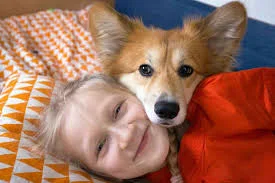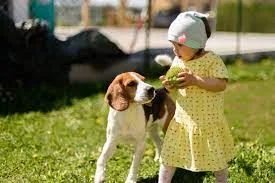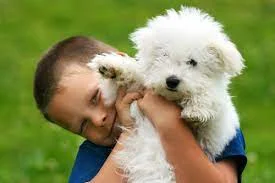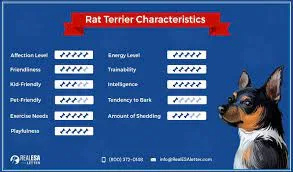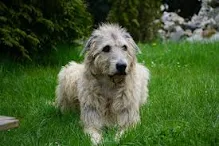Rat Terriers are a breed of dog known for their charm, intelligence, and energetic personalities. Originally bred for hunting and farm work, these small to medium-sized dogs have won the hearts of many with their playful nature and unwavering loyalty.
If you're considering adding a Rat Terrier to your family or simply want to learn more about this fascinating breed, you've come to the right place. In this comprehensive guide, we will delve into the history, characteristics, care, and training of Rat Terriers, providing you with everything you need to know to fully understand and appreciate these delightful companions.
So, get ready to unleash the charm as we embark on an exciting journey into the world of Rat Terriers.
1. The history and origins of Rat Terriers
The Rat Terrier, with its lively spirit and keen intelligence, is a breed that has captured the hearts of dog lovers for centuries. But where did these charming little dogs come from? Let's delve into the fascinating history and origins of Rat Terriers.
Originally bred in the United States in the early 19th century, Rat Terriers were developed to be versatile farm dogs. They were highly valued for their exceptional hunting skills, particularly in controlling rat populations on farms and protecting crops. Their name itself gives away their primary purpose - to hunt down and eliminate rats. The Rat Terrier's lineage is believed to be a combination of various terrier breeds, including the Smooth Fox Terrier, Manchester Terrier, and Whippet, among others. The breeding efforts were aimed at creating a small, agile, and tenacious dog that excelled at vermin eradication.
Their popularity grew steadily over the years, primarily in rural areas and farms where their remarkable hunting abilities were invaluable. However, Rat Terriers truly gained recognition as a distinct breed in the early 20th century when they were officially recognized by the United Kennel Club (UKC) in 1936.
With their growing recognition, Rat Terriers began to attract attention beyond their working abilities. People quickly discovered their friendly and affectionate nature, making them ideal family companions. These dogs were not just skillful hunters but also beloved pets with a playful and loyal disposition.
Today, Rat Terriers continue to delight families and enthusiasts alike. Their rich history as working dogs has contributed to their exceptional intelligence, agility, and adaptability. Whether they are chasing rats or cuddling up on the couch, Rat Terriers bring an undeniable charm and endless joy to their owners' lives.
The history and origins of Rat Terriers trace back to their humble beginnings as efficient farm dogs. From their rat-catching roots to becoming treasured family pets, Rat Terriers embody the perfect blend of working ability and affectionate companionship.
2. Characteristics and temperament of Rat Terriers
Rat Terriers are a breed known for their irresistible charm and unique characteristics. It is essential to understand their temperament and traits to ensure a harmonious match.
One of the key characteristics of Rat Terriers is their intelligence. These dogs are highly intelligent and quick learners, making them easily trainable. They thrive on mental stimulation and enjoy tasks that challenge their minds, such as puzzle toys or obedience training. Their intelligence also means they are adept at problem-solving, so you may need to keep an eye on their escapades!
Another notable trait of Rat Terriers is their boundless energy. These dogs are known for their high activity levels and zest for life. Regular exercise is crucial to keep them physically and mentally stimulated. Long walks, playtime in the yard, or interactive games are excellent ways to keep your Rat Terrier happy and satisfied. They also excel in dog sports like agility, where their agility and athleticism shine.
Despite their energy, Rat Terriers are also known for their affectionate nature. They are incredibly loyal and devoted to their families, forming strong bonds with their human companions. Rat Terriers thrive on human interaction and enjoy being part of the family activities. They are often described as being loving and gentle, making them great companions for individuals and families alike.
It is important to note that Rat Terriers can have a strong prey drive, owing to their historical background as vermin hunters. This means they may have a tendency to chase smaller animals or exhibit territorial behaviors. Early socialization and proper training can help mitigate any potential issues and ensure a well-rounded dog.
In summary, Rat Terriers are intelligent, energetic, and affectionate dogs that make excellent companions for active individuals or families. With their charm and unique traits, they are sure to bring joy and laughter into your home.
3. Proper care and grooming for Rat Terriers
Proper care and grooming are crucial for keeping your Rat Terrier looking and feeling their best. These energetic and intelligent dogs require regular maintenance to keep their coats healthy and their overall well-being in check. First and foremost, it is important to establish a consistent grooming routine for your Rat Terrier.
This includes regular brushing to remove any loose hair and prevent matting. Rat Terriers have short, dense coats that shed moderately, particularly during seasonal changes. A bristle brush or a grooming mitt can be used to effectively remove any loose hair and distribute their natural oils, promoting a healthy and shiny coat.
Bathing your Rat Terrier should be done on an as-needed basis, typically every 4-6 weeks. Use a mild dog shampoo that is specifically formulated for their sensitive skin. It is important to thoroughly rinse off all shampoo residue to avoid any skin irritations.
In addition to regular grooming, proper care for your Rat Terrier also includes attention to their dental hygiene. Brushing their teeth regularly can help prevent dental problems such as plaque buildup and gum disease. Regular dental check-ups with your veterinarian are also recommended to ensure optimal oral health.
Nail trimming is another essential aspect of caring for your Rat Terrier. Overgrown nails can cause discomfort and may even lead to joint issues or injuries. Trim their nails every 2-4 weeks, taking care to avoid cutting the quick, which is the sensitive part of the nail.
Lastly, proper care for your Rat Terrier also involves regular exercise and a balanced diet. These dogs are active and require daily physical activity to burn off their energy. Be sure to provide them with a nutritious diet that meets their specific dietary needs, and consult with your veterinarian to determine the appropriate portion sizes and feeding schedule.
By following these grooming and care tips, you can ensure that your Rat Terrier remains healthy, happy, and looking their best. Remember, a well-groomed and cared for Rat Terrier will not only be a joy to have as a pet but will also be a shining example of their breed's charm and beauty.
4. Training tips and techniques for Rat Terriers
Training a Rat Terrier can be an enjoyable and rewarding experience for both you and your furry friend. They are known for their intelligence, agility, and eagerness to please, making them highly trainable dogs. However, like any other breed, they require consistent training and guidance to become well-behaved companions.
When it comes to training your Rat Terrier, positive reinforcement techniques work best. These dogs respond well to praise, treats, and rewards, so be sure to have plenty on hand during training sessions. Start with basic commands like sit, stay, and come, gradually progressing to more advanced commands as your dog becomes more confident and obedient. Consistency is key when training a Rat Terrier. Establish a regular training schedule and stick to it. Short, focused sessions of about 10-15 minutes, a few times a day, are more effective than long, sporadic sessions. This breed can become easily bored, so keep training sessions engaging and varied to maintain their interest.

Socialization is another crucial aspect of training for Rat Terriers. Expose them to different environments, people, and animals from a young age to help them develop good manners and become well-rounded dogs. This will also help prevent any potential behavioral issues down the line. Patience and understanding are essential during the training process.
Rat Terriers are intelligent but can also be stubborn at times. If your dog is having difficulty grasping a command, take a step back and break it down into smaller, more manageable steps. Celebrate every small victory and provide gentle guidance until they fully understand what is expected of them.
Lastly, remember that training is an ongoing process. Even after your Rat Terrier has mastered the basics, continue to reinforce their training throughout their life. Regularly engage in mental stimulation activities, such as puzzle toys or scent games, to keep their minds sharp and prevent boredom.
By following these training tips and techniques, you can unleash the full charm and potential of your Rat Terrier, creating a well-behaved and happy companion for years to come.














